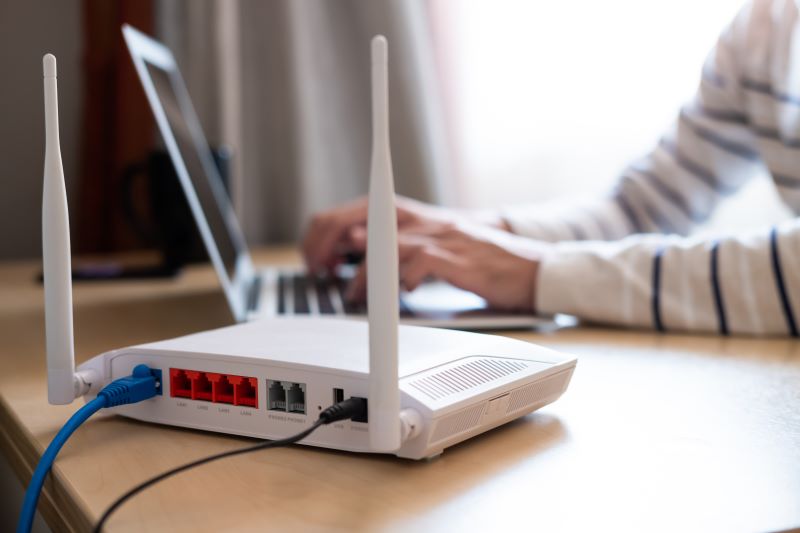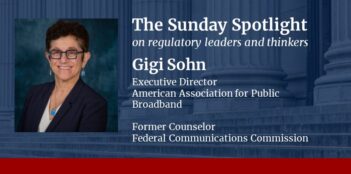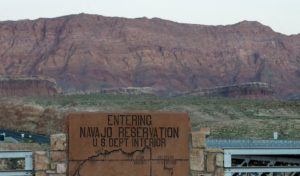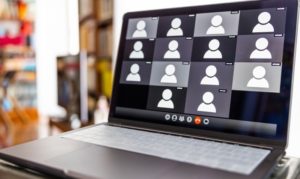
Experts discuss lack of internet access and potential solutions on how to best bridge digital divide.
As the world moved online in response to the COVID-19 pandemic, 19 million Americans fell behind.
Inequities in access to education, employment, and health care increased drastically as low-income individuals struggled to access affordable broadband and technological devices necessary to participate in an increasingly digital world. Nearly a year into the pandemic, 4 in 10 low-income Americans did not own a laptop or have internet access in their home.
In response to the exacerbated need for reliable and affordable internet access, the U.S. Congress in 2020 directed the Federal Communications Commission (FCC) to develop an Emergency Broadband Benefit Program to provide discounted broadband service and funding to purchase portable electronic devices for eligible households. Individuals living on tribal lands, who face even greater barriers to broadband adoption, received larger stipends under the program. The FCC today implements a newer version of this program called the Affordable Connectivity Program.
The Biden Administration further addressed the digital divide in a proposed “Internet for All” initiative, a $45 billion plan intending to bolster broadband infrastructure and access to high-speed internet. In addition, this funding will emphasize the importance of digital literacy training for marginalized communities, including communities of color, older Americans, and those living in rural areas.
Despite the federal government’s efforts to bolster investment and close the digital divide, gaps remain in achieving fully equal access to the internet by everyone in the United States. Some scholars propose universal internet access and community networks as potential solutions. Awareness of disparities in broadband access has also prompted some observers to ask whether internet access is now a fundamental human right.
In this week’s Saturday Seminar, experts discuss progress made in bridging the digital divide, as well as work that remains to produce more equitable outcomes.
- In a Congressional Research Service report, Colby Leigh Rachfal of the Library of Congress details federal support to improve access to broadband and digital learning, including the Coronavirus Aid, Relief, and Economic Security Act and other pertinent legislation. Rachfal outlines the FCC’s legal responsibility to ensure availability of broadband to all Americans, as well as its previous efforts to fulfill this objective. The distinct challenges presented by the COVID-19 pandemic, she argues, have required greater financial support from the federal government, potentially in the form of incentives for both low-income households and the private sector.
- States and municipalities should play a greater role in expanding broadband access, argue Tejas N. Narechania and Erik Stallman of University of California, Berkeley School of Law in a Harvard Journal of Law & Technology article. According to the Narechania and Stallman, local governments better understand community needs and ongoing relationships with local broadband providers. Narechania and Stallman argue that states have the unique ability to treat internet access like other locally provided utilities, such as power or water.
- In a report released by Next Century Cities and the Samuelson Law, Technology & Public Policy Clinic, Ross Ufberg and Shalev Netanel of the University of California, Berkeley School of Law explain that broadband access plays a central role in connecting citizens to essential government assistance programs and public safety information. According to Ufberg and Netanel, many communities and individuals face access and adoption barriers to broadband. Ufberg and Netanel argue that broadband access requires affordability, awareness, and technological proficiency. The innovative approaches of local regulators and legislators in California demonstrate some of the possible solutions, Ufberg and Netanel contend. For example, San Rafael’s city officials partnered with a local nonprofit to build its own city-wide, free wireless network, while Gonzales’ city officials deployed thousands of Wi-Fi hotspots to make up for the lack of otherwise-accessible internet services.
- In an article published in the Journal of Human Rights and Social Work, Cynthia K. Sanders of Boise State University and Edward Scanlon of the University of Kansas argue that internet access is a fundamental human right. Sanders and Scanlon explain that racial disparities in internet access constitute “digital redlining,” which perpetuates social inequality by making online participation in government and economy more difficult for some already-disadvantaged individuals and communities. According to Sanders and Scanlon, California’s Internet for All Now Act, which amended the state’s public utility code to include the deployment of broadband services in low-income and rural areas, demonstrates the power of state and local policy initiatives to reduce the digital divide.
- In a report released by the Brookings Institution, Adie Tomer of Brookings Metro and several coauthors explore systemic barriers impeding widespread broadband adoption and regulatory innovations that can achieve more equitable outcomes. The report analyzes the impact of pricing challenges and geographic inconsistencies on broadband adoption. The report’s authors find that high prices exclude disadvantaged American households. According to the report, internet providers disproportionately underserve rural communities, and “digital redlining” causes broadband network owners to skip over communities of color within their service geographies. The report’s authors suggest potential interventions to improve equity outcomes, including build-outs of private networks, direct subsidy programs, and digital literacy programs.
- In an article published in the Georgetown Journal on Poverty Law & Policy, Haochen Sun of the University of Hong Kong Faculty of Law analyzes how a federal court holding, which states that the Fourteenth Amendment protects a fundamental right to technology, could expand broadband internet access in the United States. The COVID-19 pandemic triggered unprecedented internet use, which Sun explains sheds light on a digital chasm disadvantaging many Americans. Despite widespread public support of technology as a human right, and the United Nations’ call for global recognition of such a right, the U.S. has failed to follow suit. Sun argues that recognition of a fundamental right to technology would improve public accessibility of broadband, compel judicial review of governmental decisions restricting access to the internet, and encourage technology companies to promote equitable access to benefits.
The Saturday Seminar is a weekly feature that aims to put into written form the kind of content that would be conveyed in a live seminar involving regulatory experts. Each week, The Regulatory Review publishes a brief overview of a selected regulatory topic and then distills recent research and scholarly writing on that topic.



